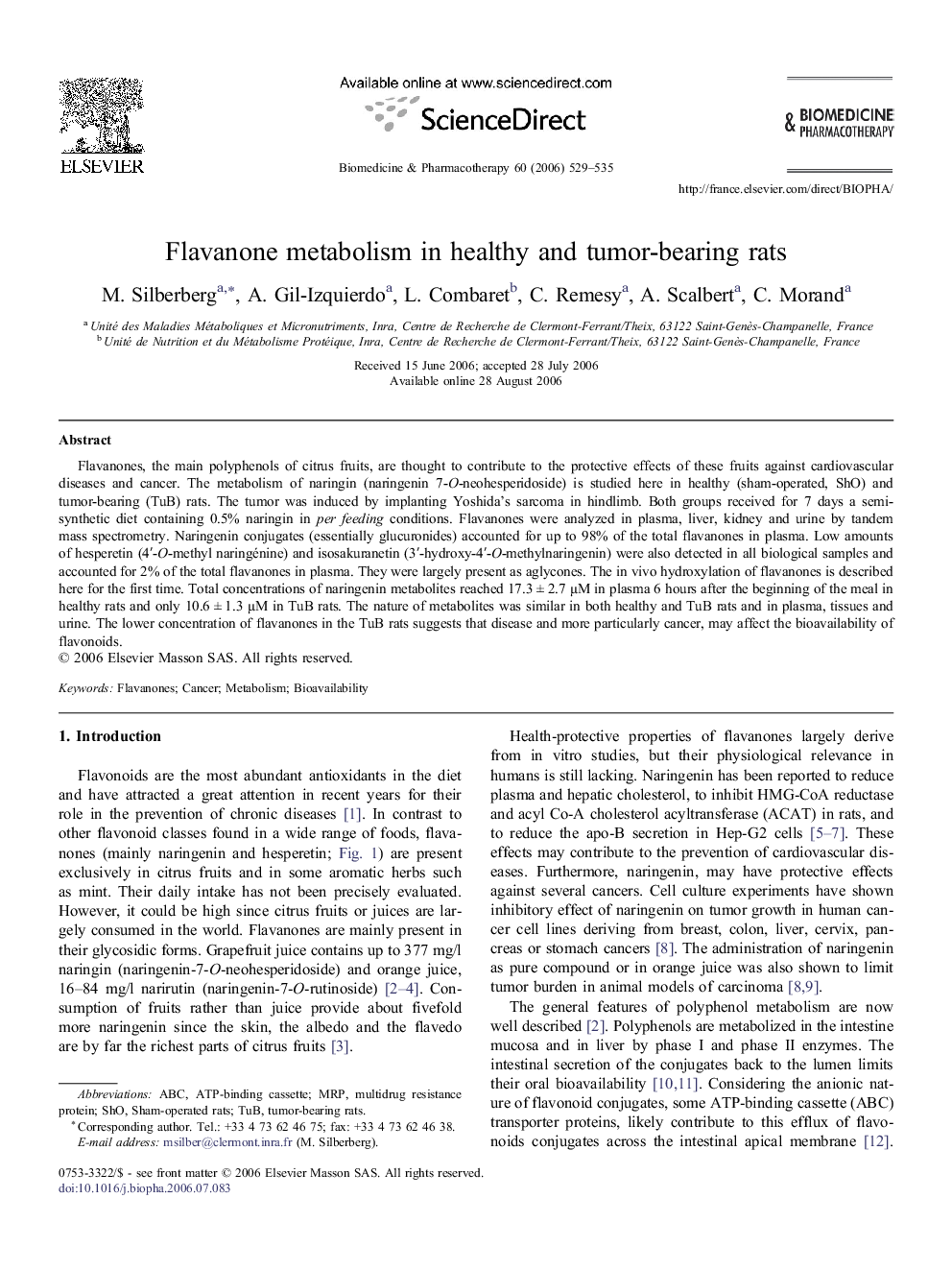| Article ID | Journal | Published Year | Pages | File Type |
|---|---|---|---|---|
| 2525853 | Biomedicine & Pharmacotherapy | 2006 | 7 Pages |
Flavanones, the main polyphenols of citrus fruits, are thought to contribute to the protective effects of these fruits against cardiovascular diseases and cancer. The metabolism of naringin (naringenin 7-O-neohesperidoside) is studied here in healthy (sham-operated, ShO) and tumor-bearing (TuB) rats. The tumor was induced by implanting Yoshida's sarcoma in hindlimb. Both groups received for 7 days a semi-synthetic diet containing 0.5% naringin in per feeding conditions. Flavanones were analyzed in plasma, liver, kidney and urine by tandem mass spectrometry. Naringenin conjugates (essentially glucuronides) accounted for up to 98% of the total flavanones in plasma. Low amounts of hesperetin (4′-O-methyl naringénine) and isosakuranetin (3′-hydroxy-4′-O-methylnaringenin) were also detected in all biological samples and accounted for 2% of the total flavanones in plasma. They were largely present as aglycones. The in vivo hydroxylation of flavanones is described here for the first time. Total concentrations of naringenin metabolites reached 17.3 ± 2.7 μM in plasma 6 hours after the beginning of the meal in healthy rats and only 10.6 ± 1.3 μM in TuB rats. The nature of metabolites was similar in both healthy and TuB rats and in plasma, tissues and urine. The lower concentration of flavanones in the TuB rats suggests that disease and more particularly cancer, may affect the bioavailability of flavonoids.
